paediGAV
FEATURES
- a gravitational valve for the treatment of hydrocephalus in children
- more protection against overdrainage complications due to position-dependent function
- MRT compatible up to 3 Tesla
- very small, slim and cylindrical design for easy implantation in the retroauricular region and maximum flow volume
- precise precision engineering
- robust and durable due to the use of titanium
FUNCTIONALITY
The paediGAV is the first pediatric valve for the treatment of pediatric hydrocephalus that works in a position-dependent manner and thus offers more protection against overdrainage complications.
The paediGAV is manufactured from a solid and stable titanium housing. The proximal side consists of a Differential pressure unit. A spiral spring controls the valve opening pressure. The functioning of the gravitational unit on the distal valve side is ensured by a tantalum and a sapphire ball. The slim and cylindrical design makes implantation comparatively easy.
Due to the integrated gravitational technology it is important to implant the valve parallel to the body axis.
Horizontal Position
When lying down, the intraventricular pressure is controlled exclusively by the Differential pressure unit of the paediGAV. The freely movable balls of the gravitational unit do not provide any additional resistance in horizontal body position and automatically keep the flow channel open at this point. In the illustration a), the Differential pressure unit is closed and prevents any drainage of cerebrospinal fluid. If the intraventricular pressure increases, this force acts on the Differential pressure unit and finally causes the spring to give way and a gap to form between the cone and the ball, which now allows the cerebrospinal fluid to flow. The paediGAV is open in the illustration b).
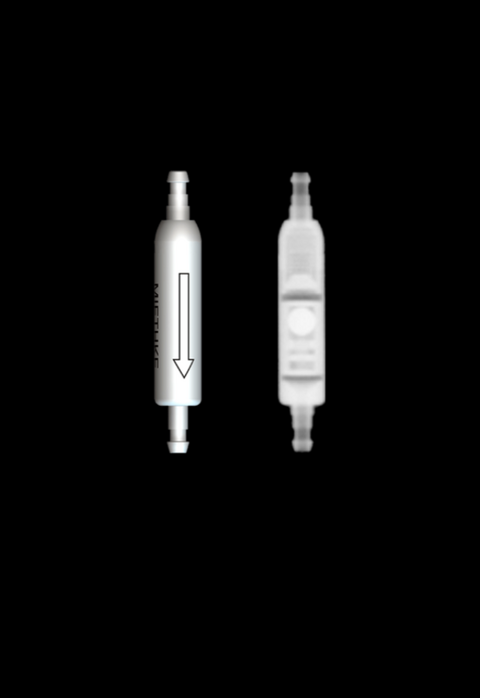
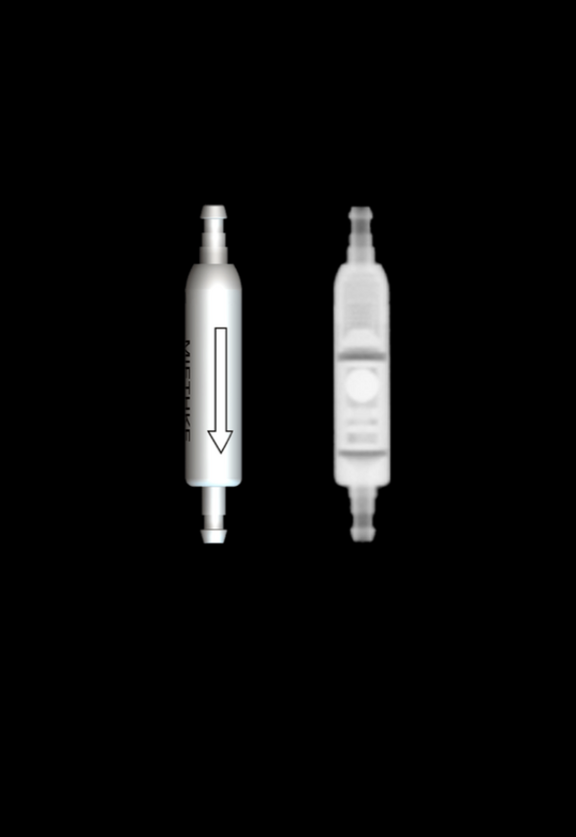
Vertical Position
In the upright position, the gravitational unit is automatically activated by the falling of the balls. A higher valve opening pressure is established, since the opening pressures of both valve mechanisms (differential pressure and gravitational unit) must now be overcome. If the patient stands up, the gravitational unit closes and the risk of overdrainage is reduced. Only when the sum of both valve units is exceeded by the increasing intraventricular pressure, the valve opens and thus enables the necessary drainage of the cerebral fluid.
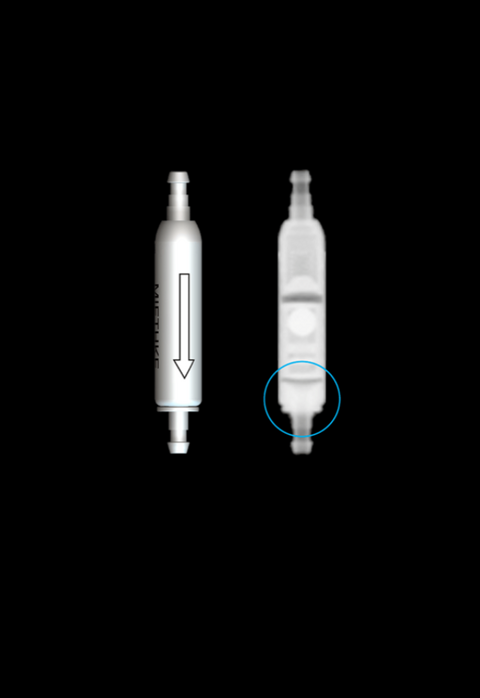
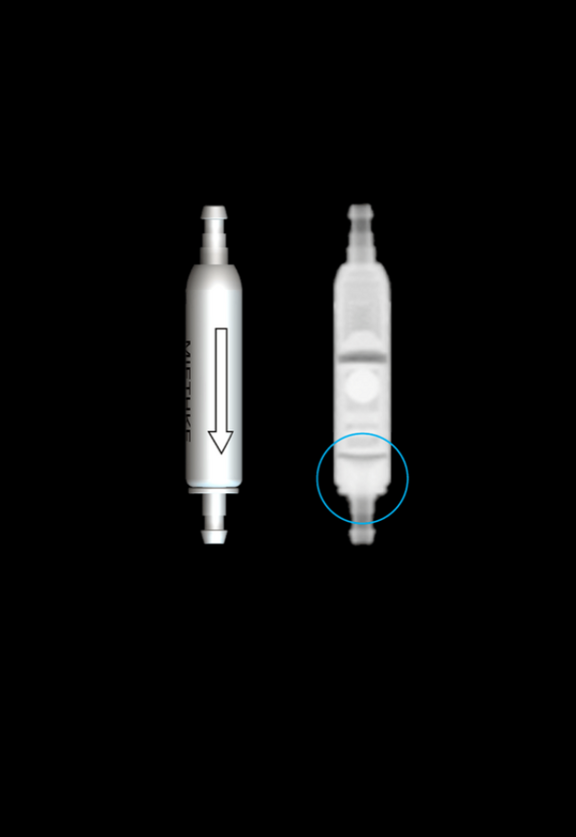
PRESSURE LEVEL DETECTION IN X-RAY IMAGE
Each preset pressure stage is specially coded and can be recognized postoperatively in imaging. The lower illustrations show the X-ray images of the first 8 available pressure stages of the paediGAV (4/14, 4/19, 4/24, 9/19 cmH2O):

4/14 cmH2O

4/14 cmH2O

4/19 cmH2O

4/19 cmH2O
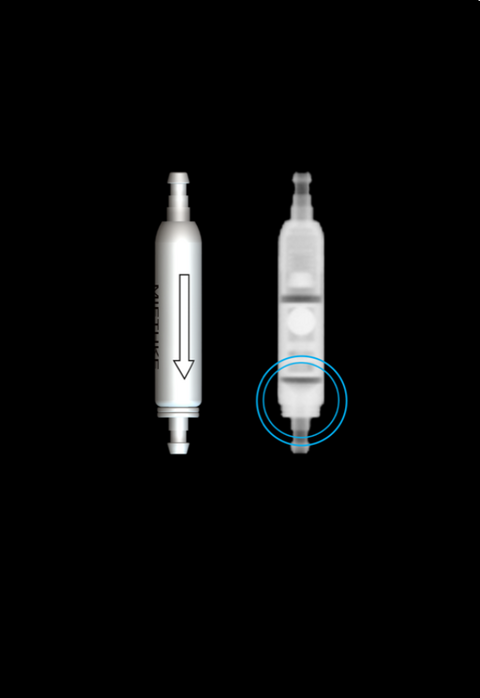
4/24 cmH2O
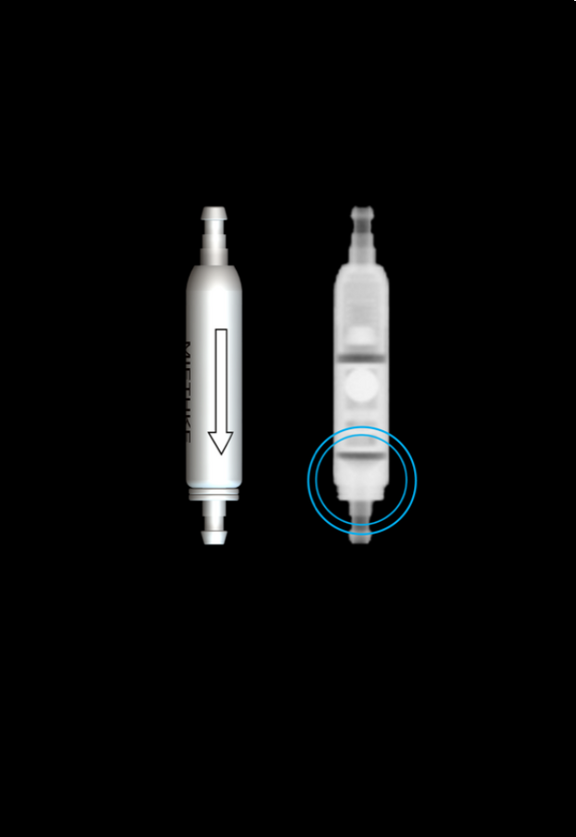
4/24 cmH2O
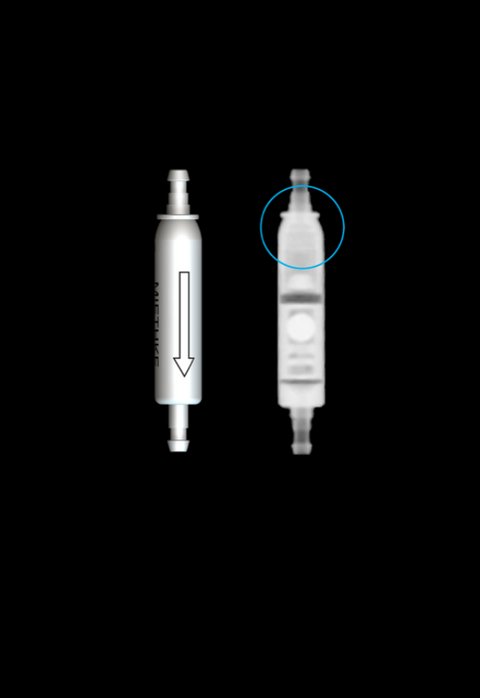
9/19 cmH2O
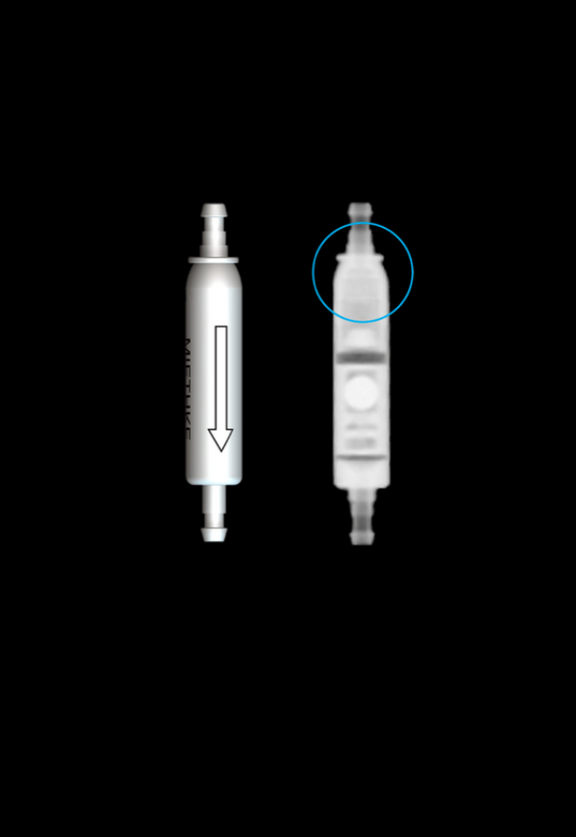
9/19 cmH2O
For detailed information on the optimum pressure stage setting, please refer to our pressure stage recommendation.
MIETHKE APP – UNDERSTANDING VALVES EASILY
The MIETHKE App shows clearly and quickly understandable how our valves work:
- Influence of the body position on the opening pressure: The motion sensor of the smartphone simulates the body position of the patient: upright – inclined – lying.
- Pressure stage recognition in the X-ray image: Every set or preset pressure stage is shown here and can be easily recognized by means of templates.
- Simulation of adjustability: Valves can be easily adjusted with the finger and thus help to understand what is happening inside the valve.
- View into the inside of MIETHKE valves: All valves allow a view of their construction and thus the influence of the cerebrospinal fluid flow on the functioning can be shown in an easily understandable way.
- free for Apple and Android
© 2025 Christoph Miethke GmbH & Co. KG


